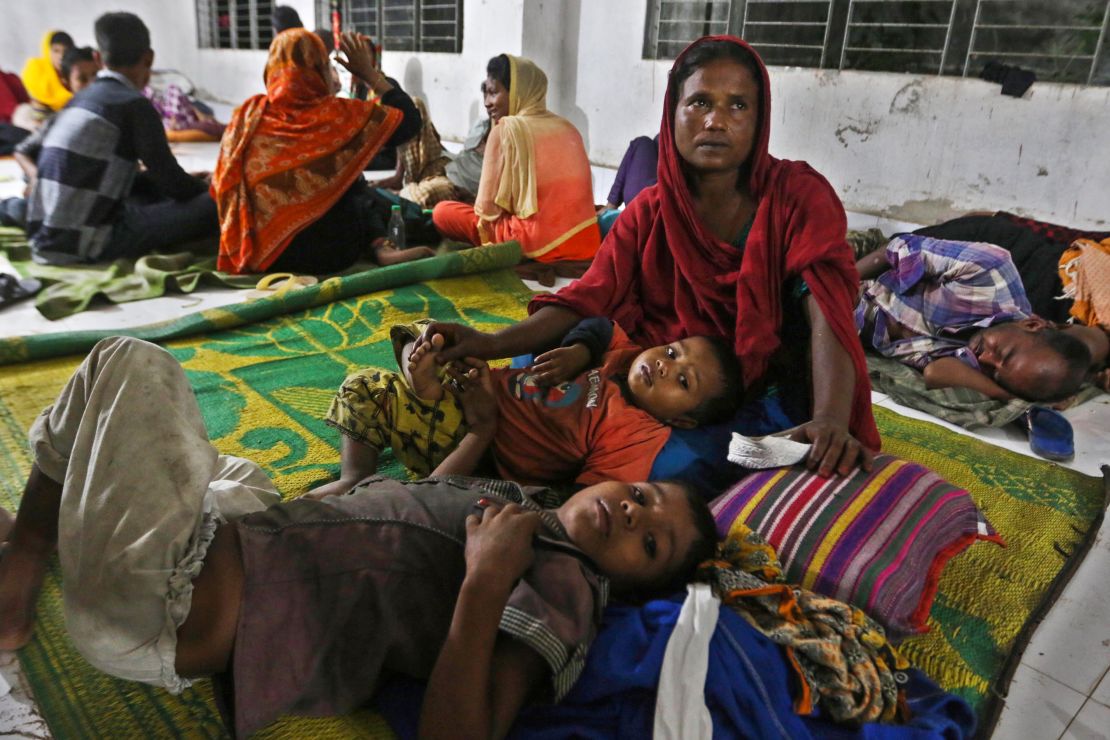Story highlights
NEW: Authorities say that 1,000,000 are being evacuated
Airports, ports closed; leave canceled for doctors, nurses
Bangladesh has moved to evacuate nearly one million people from low-lying areas as a powerful tropical cyclone pounds the country’s southern coastline.
At least six people have died since the cyclone, dubbed Mora, made landfall early Tuesday morning between the cities of Chittagong and Cox’s Bazar and is heading north, authorities in the capital Dhaka said.
Most of those killed were struck by fallen trees, Khalid Mahmood, a director at Disaster Management Department, told CNN. He added that no more deaths were expected as the worst had passed.
Residents were seeking shelter in schools and other safe buildings in 17 coastal districts, said Abu Syed Mohammad Hashim, acting director general of the department. Officials have organized 3,800 relief centers ahead of the storm and airports and ports were shut in the worst affected areas.
Medical teams have been formed and doctors and nurses have had their leave requests canceled in anticipation of the storm’s landfall, according to Bangladeshi state media. Hashim told the state-run news agency BSS that rescue teams comprised of members of the armed forces and other agencies were also on standby.
With about 700 kilometers of coastline, Bangladesh is exposed to cyclones and is often battered by deadly storms. Seven of the top ten deadliest storms in recorded history have occurred in either Bangladesh or Myanmar, according to CNN meteorologist Pedram Javaheri.
“A combination of its lengthy and exposed coastline, inadequate infrastructure and plenty of fuel in the way of warm Bay of Bengal waters play a role in making this region the deadliest in the world as it relates to tropical cyclones,” Javaheri said.
At the southern end of the Bay of Bengal, Sri Lanka has been experiencing heavy monsoon rains and severe flooding, which have left at least 160 people dead and dozens more missing. The two weather systems, however, are unrelated.

Airports closed
Mora is the equivalent of a strong tropical storm and will bring winds around 100 kilometers per hour as it moves onshore, said CNN meteorologist Taylor Ward. A more significant problem than the winds will be the potential for flooding – from storm surge and heavy rainfall, he said.
“The coastline of Bangladesh is very low-lying and is prone to storm surge problems,” Ward said. “Additionally, tropical cyclones in the region bring extremely heavy rainfall which often turns deadly in the densely populated areas.”
In May 2016, Cyclone Roanu made landfall in Bangladesh with similar speed winds causing the deaths of at least two dozen people.
Some low-lying areas of Cox’s Bazar are already underwater due to an unusually high tide, state media reports.
The country’s two main seaports in Chittagong and Mongla have suspended container handling, and river transports across Bangladesh have been suspended. Chittagong and Cox’s Bazar have been advised to hoist the number 10 warning signal – the highest level – and other areas the lesser number eight signal.
The airports of Chittagong and Cox’s Bazar have also been closed; Cox’s Bazar indefinitely and Chittagong’s Shah Amanat International Airport until at least 2 p.m. local time (4 a.m. ET) Tuesday.
“We will reopen the airport if weather permits after 2 p.m. tomorrow… the suspension period will linger if the brunt of cyclone badly affects our airport infrastructure,” CAAB flight safety director Ziaul Kabir was quoted as saying.

